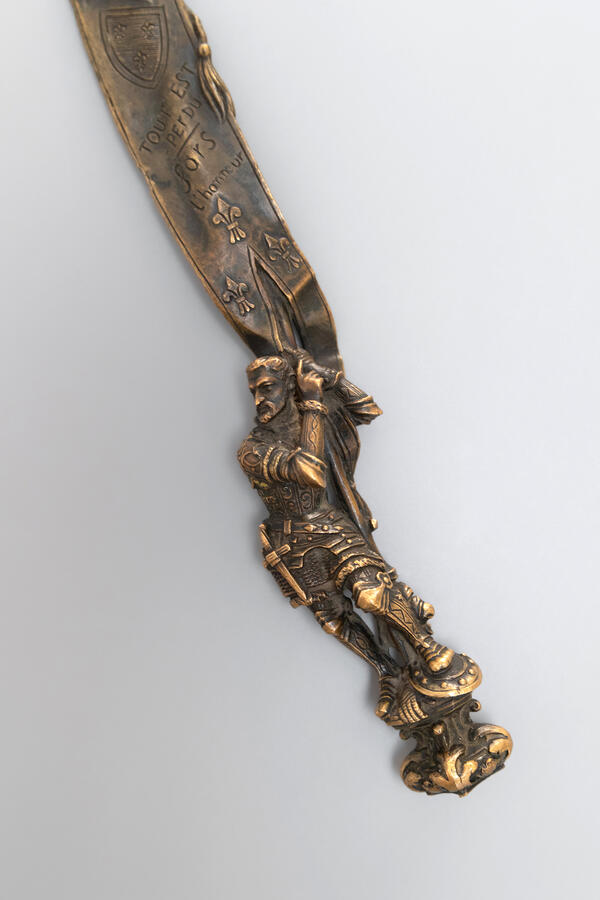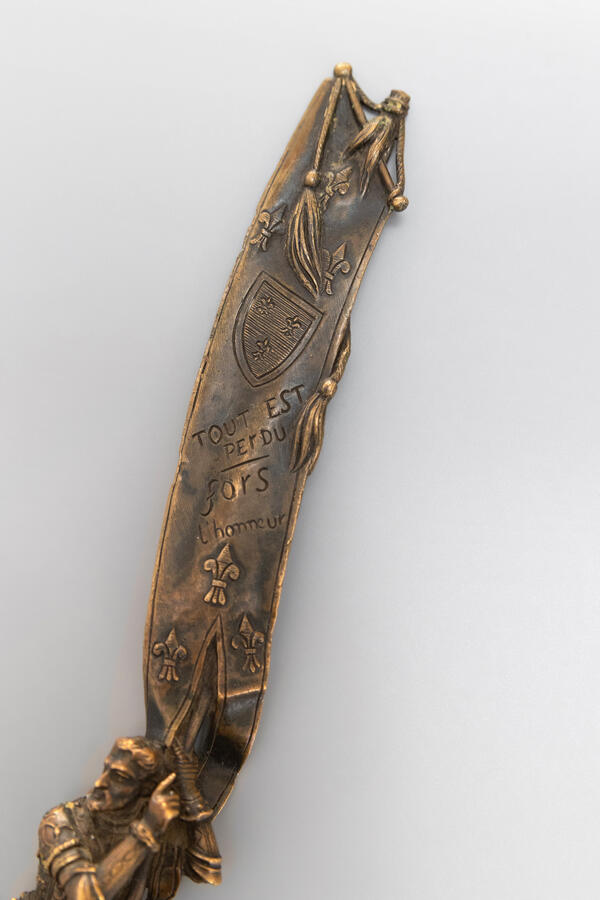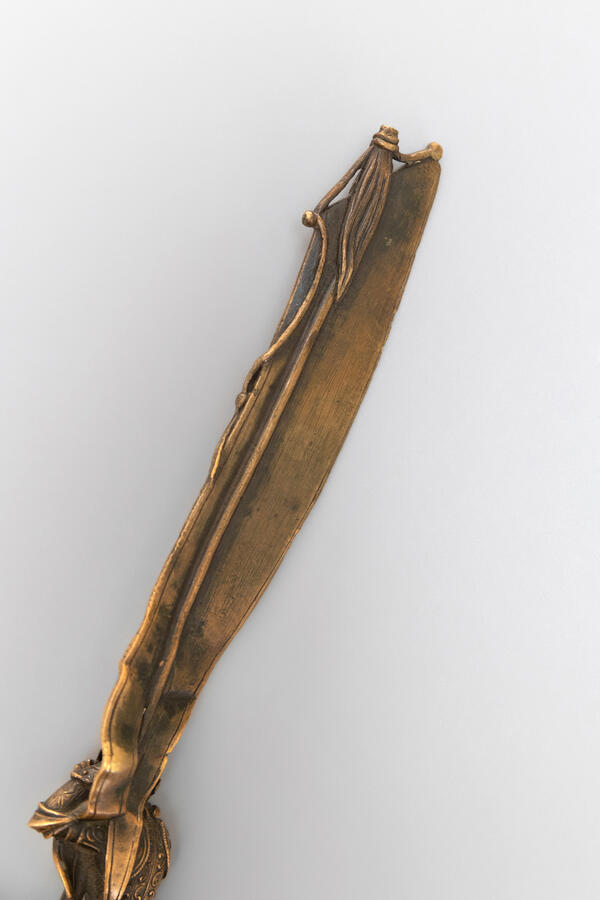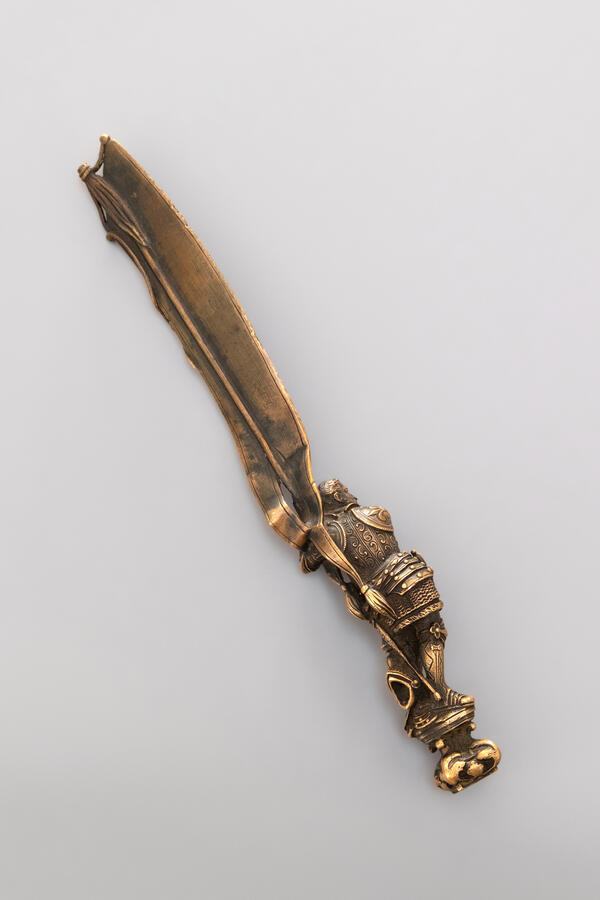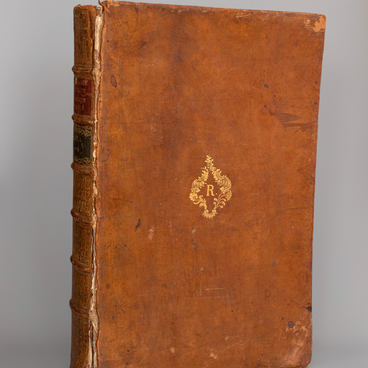The collection of the Penza Literature Museum features a paper knife donated in 2022 by one of its regular visitors. The knife is made of bronze, it is 25 cm long (including the handle) and 4 centimeters wide. The handle is in the form of a warrior clad in armor. The blade is made in the form of a flag with an inscription in French saying “Tout est perdu fors l’honneur” (All is lost except honor).
Stationery knives for cutting books and magazines, and for opening envelopes came into use in the 18th century. As soon as in the 19th century paper-cutting knives became common due to the widespread use of paper and imperfection of printing equipment. The point is that in the early 19th century one could not just open a new book and read it at once, as printing houses had no equipment capable of cutting a large number of book pages. Therefore, a large sheet, which contained up to twenty pages of the future book, was folded several times, simply stitched, and joined to others. That was the way for making up a book that immediately, without further cutting, went for binding. It was impossible to turn the pages of such a book, because the sheets were not cut.
The knives were not very sharp, but still sharp enough to cut the folded paper. There was a great variety of stationery knives. They were made of bone, metal, or wood and had various decorations and designs. Many items, due to their materials and exquisite design, can be safely attributed to works of decorative and applied art. Such items were made for wealthy people and were often inherited.
A paper-cutting knife could also be used to make marks in a book or as a bookmark itself. A person who collected books only for prestige could easily be identified by uncut volumes in their library, and a slovenly person — by pages torn without a knife. Book publishers tried to combat this barbaric attitude. A memo to the reader, published at the end of the 19th century by the journal “The News of Bookstores of the Partnership of M.O. Volf” included a prohibition,
